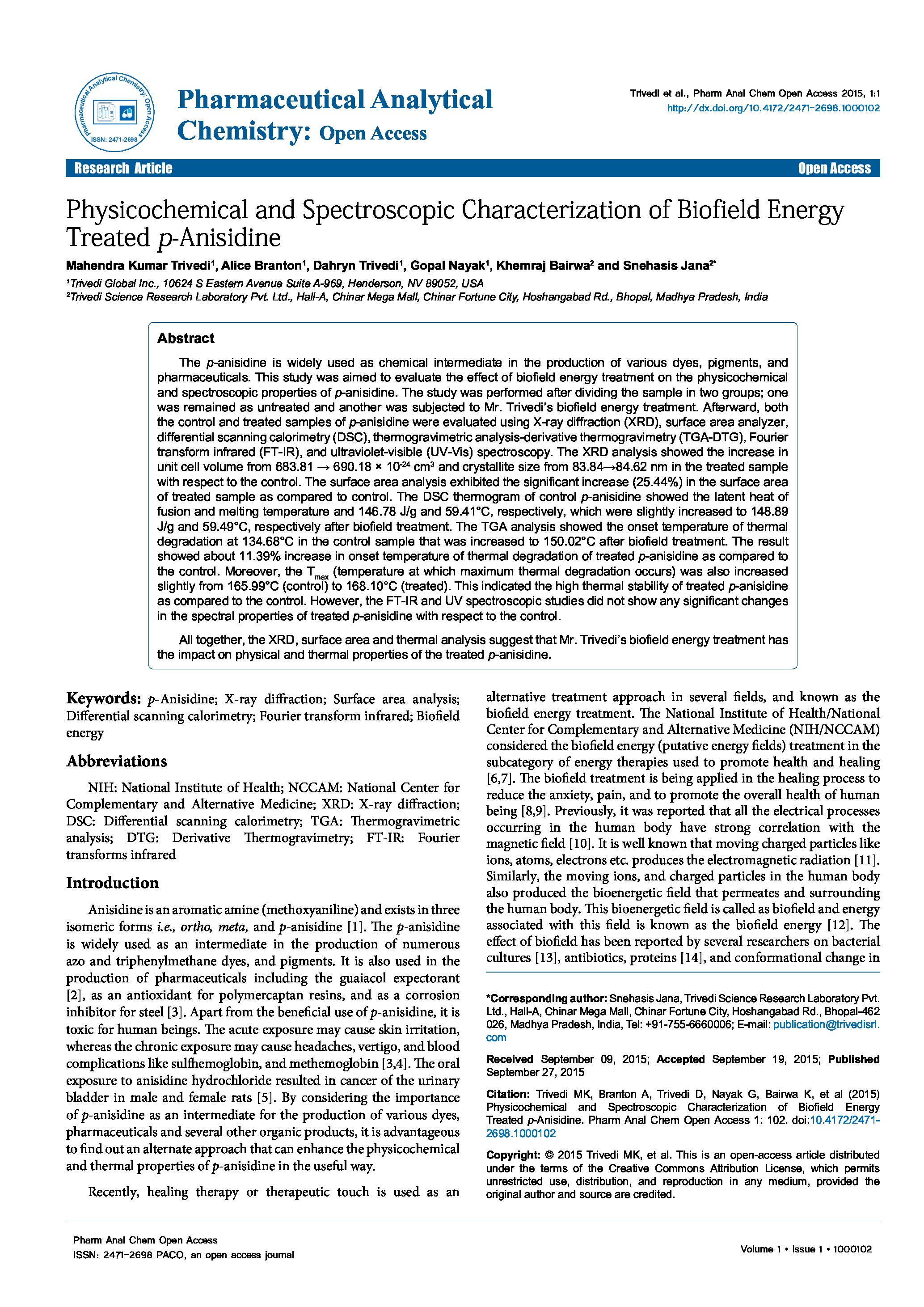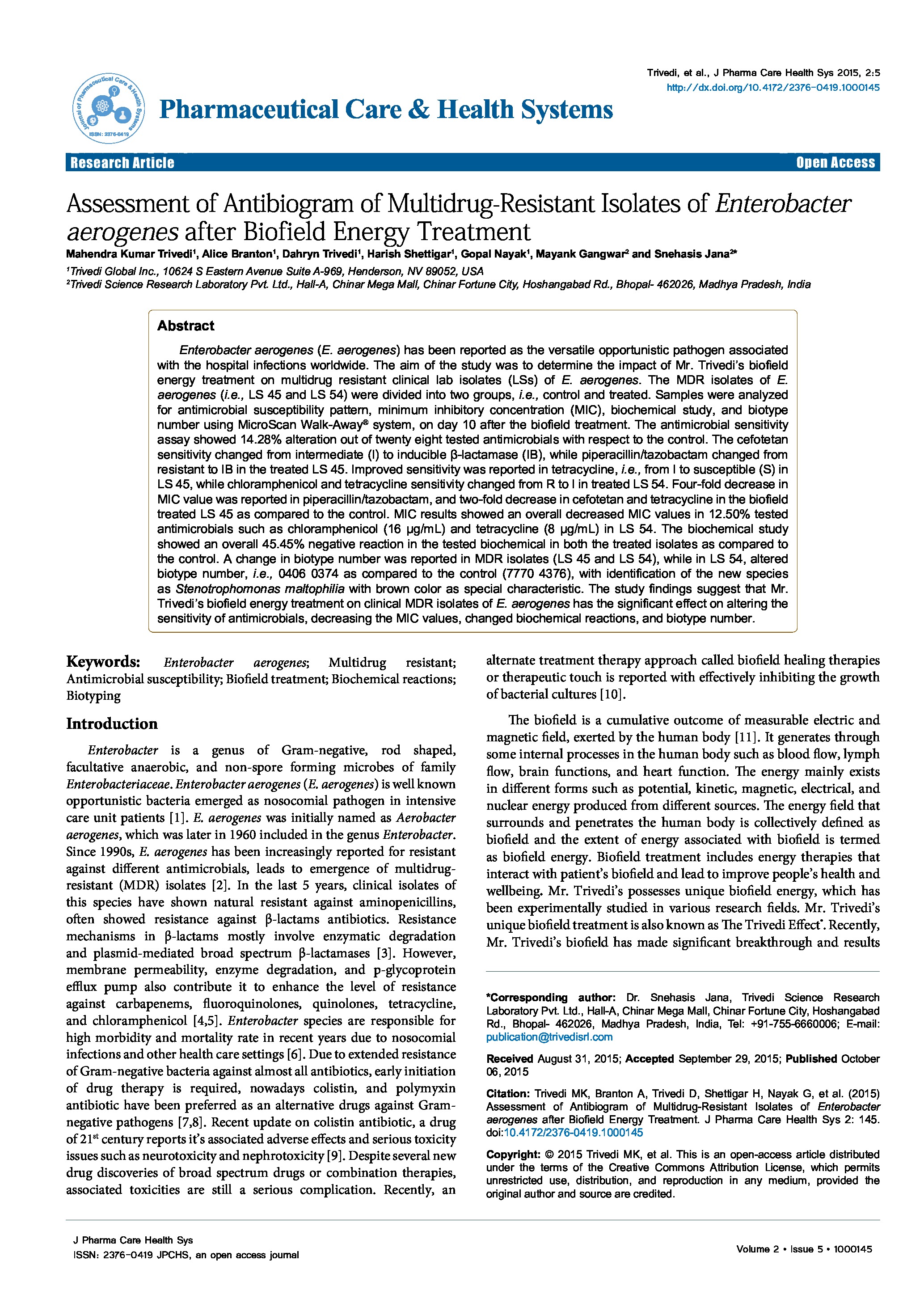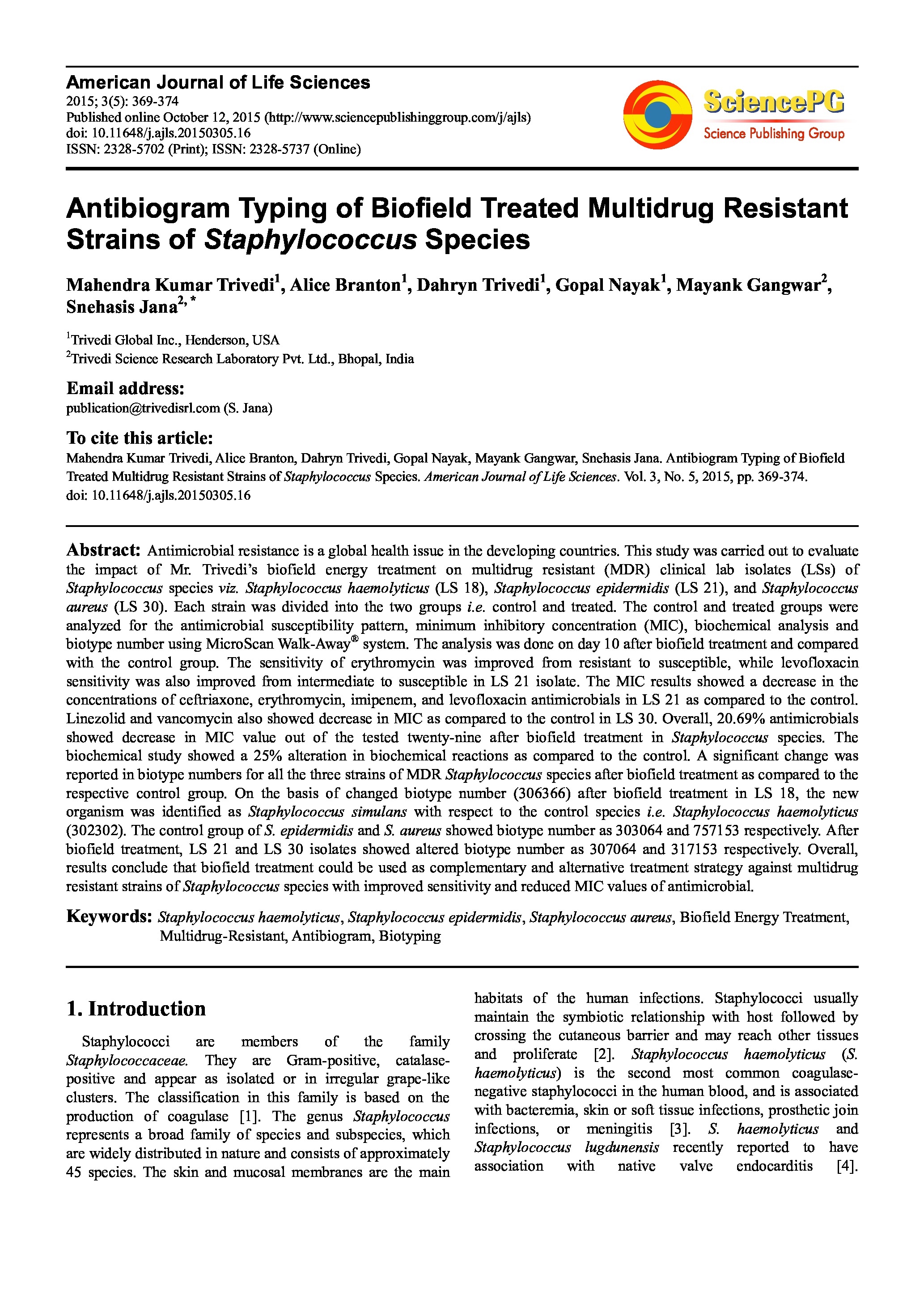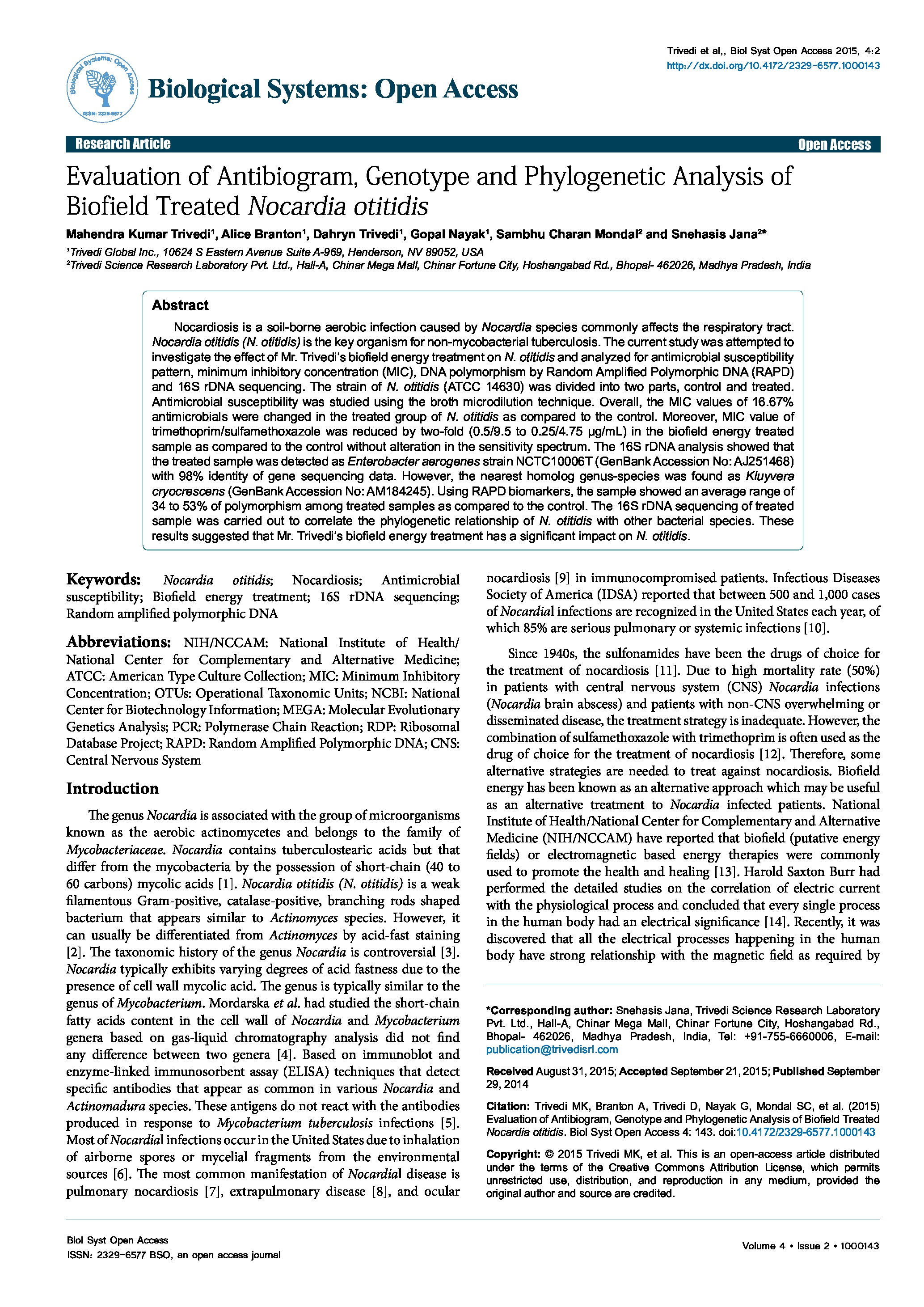Date of upload:
21.11.2016
Co-author:
Mahendra Kumar Trivedi, Alice Branton, Dahryn Trivedi, Harish Shettigar, Mayank Gangwar, Snehasis Jana
Abstract:
Enterobacter aerogenes (E. aerogenes) has been reported as the versatile opportunistic pathogen associated with the hospital infections worldwide. The aim of the study was to determine the impact of Mr. Trivedi’s biofield energy treatment on multidrug resistant clinical lab isolates (LSs) of E. aerogenes. The MDR isolates of E. aerogenes (i.e., LS 45 and LS 54) were divided into two groups, i.e., control and treated. Samples were analyzed for antimicrobial susceptibility pattern, minimum inhibitory concentration (MIC), biochemical study, and biotype number using MicroScan Walk-Away® system, on day 10 after the biofield treatment. The antimicrobial sensitivity assay showed 14.28% alteration out of twenty eight tested antimicrobials with respect to the control. The cefotetan sensitivity changed from intermediate (I) to inducible β-lactamase (IB), while piperacillin/tazobactam changed from resistant to IB in the treated LS 45. Improved sensitivity was reported in tetracycline, i.e., from I to susceptible (S) in LS 45, while chloramphenicol and tetracycline sensitivity changed from R to I in treated LS 54. Four-fold decrease in MIC value was reported in piperacillin/tazobactam, and two-fold decrease in cefotetan and tetracycline in the biofield treated LS 45 as compared to the control. MIC results showed an overall decreased MIC values in 12.50% tested antimicrobials such as chloramphenicol (16 µg/mL) and tetracycline (8 µg/mL) in LS 54. The biochemical study showed an overall 45.45% negative reaction in the tested biochemical in both the treated isolates as compared to the control. A change in biotype number was reported in MDR isolates (LS 45 and LS 54), while in LS 54, altered biotype number, i.e., 0406 0374 as compared to the control (7770 4376), with identification of the new species as Stenotrophomonas maltophilia with brown color as special characteristic. The study findings suggest that Mr. Trivedi’s biofield energy treatment on clinical MDR isolates of E. aerogenes has the significant effect on altering the sensitivity of antimicrobials, decreasing the MIC values, changed biochemical reactions, and biotype number.




